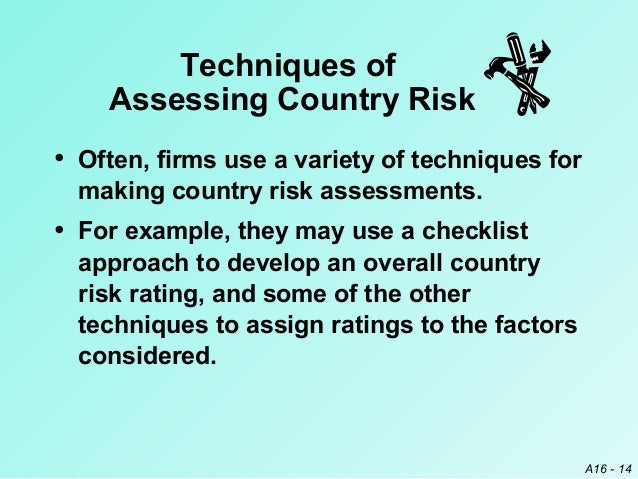
Buying options
i. Risk Management Planning: choosing how to approach, plan, and execute the risk management exercises for a project. ii. Risk Identification: figuring out which risks may influence the project and archiving their attributes. iii. Qualitative Risk Analysis: organizing risks for resulting further analysis on the other In the dissertation the issues of country risk assessment in economic security and sustainability context are investigated. The main object of research is country risk and its structural components. The dissertation‘s main goal is to anaze valuation methods of country risk from different perspectes and suest a mo- · Dissertations on Risk Management Risk Management is a process for identifying, understanding and mitigating any risks that are associated with a particular task or event. Individuals and organisations implement Risk Management to provide a layer of protection, allowing them to minimise risk in their operations. View All Dissertation Examples

Best Risk Management Dissertation Topics for college students
In the dissertation the issues of country risk assessment in economic security and sustainability context are investigated. The main object of research is country risk and its structural components. The dissertation‘s main goal is to anaze valuation methods of country risk from different perspectes and suest a mo- This paper briefly discusses the concepts and definitions, and presents a survey of the quantitative methods that are used to address various issues related to i. Risk Management Planning: choosing how to approach, plan, and execute the risk management exercises for a project. ii. Risk Identification: figuring out which risks may influence the project and archiving their attributes. iii. Qualitative Risk Analysis: organizing risks for resulting further analysis on the other

i. Risk Management Planning: choosing how to approach, plan, and execute the risk management exercises for a project. ii. Risk Identification: figuring out which risks may influence the project and archiving their attributes. iii. Qualitative Risk Analysis: organizing risks for resulting further analysis on the other · The country risk means the potential risk that likely caused by engaging in credit, investment and financial transaction across national borders. Commonly, the occurrence of the country risk is caused by the act of country’s sovereignty in the international economic activity · According to Baek and Qian (), political risks for a country significantly influence the level of foreign direct investment. Therefore, such information becomes critical in conducting a country risk analysis. Additionally, competition in the market economies has not been identified. This is key in promoting and strengthening market

i. Risk Management Planning: choosing how to approach, plan, and execute the risk management exercises for a project. ii. Risk Identification: figuring out which risks may influence the project and archiving their attributes. iii. Qualitative Risk Analysis: organizing risks for resulting further analysis on the other · According to Baek and Qian (), political risks for a country significantly influence the level of foreign direct investment. Therefore, such information becomes critical in conducting a country risk analysis. Additionally, competition in the market economies has not been identified. This is key in promoting and strengthening market · The country risk means the potential risk that likely caused by engaging in credit, investment and financial transaction across national borders. Commonly, the occurrence of the country risk is caused by the act of country’s sovereignty in the international economic activity

· The World Bank- The World Bank develops country risk scores based on six key indicators. These are corruption, government effectiveness, political stability, regulatory quality, the rule of law, and accountability. The WB’s scores are scaled around zero, with negative numbers indicating more risk and positive numbers less blogger.comted Reading Time: 10 mins i. Risk Management Planning: choosing how to approach, plan, and execute the risk management exercises for a project. ii. Risk Identification: figuring out which risks may influence the project and archiving their attributes. iii. Qualitative Risk Analysis: organizing risks for resulting further analysis on the other This paper briefly discusses the concepts and definitions, and presents a survey of the quantitative methods that are used to address various issues related to
No comments:
Post a Comment